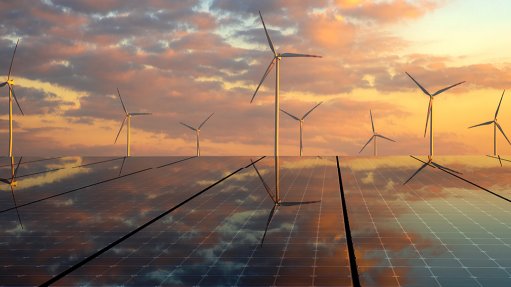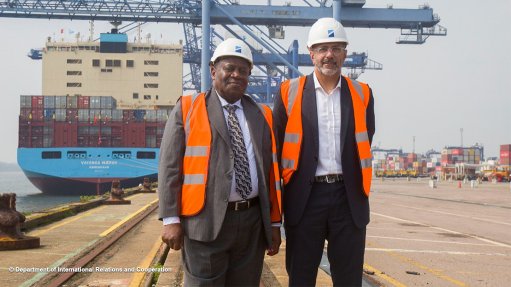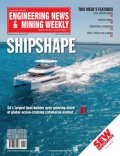State of the nation
On the August 15, 2006, I wrote that: “I don’t think that there is an engineer, architect, quantity surveyor or other professional who has not had a very busy year. It is likely that for many – this is the busiest year ever, of all time.
Most of my professional colleagues are, as a matter of routine, working every night and over weekends. Certainly I am. Quite simply, there is too much work and not enough people to do it all . . .”
At the time, the rand:dollar exchange rate was R8 to the dollar and the gold price was $625/oz, implying that an ounce of gold was worth R5 000. Today, the exchange rate is R11 to the dollar and an ounce of gold is worth R14 000.
What this means is that, if you bought gold in 2006, then the value has risen by about 13% a year to 2014 compounded. For those financial hounds out there, this is a price to earning ratio of 7. Not bad.
So, why, then, is the gold mining industry battling and the platinum miners crawling? Why, in 2006, was my firm so busy we could not even cope, whereas now, well, we are not doing nothing but we are pretty relaxed? I wish I could put my finger on it.
Now here is a thing: Eskom peak system electrical demand in 2006 was 33 461 MW. In 2013, it was 35 364 MW. This is hardly the same as the increase in the gold price. In fact, it is only 5% in total, or 0.7% a year. Thus, while the gold price rises, the rest of the economy has tanked.
What would have happened if Eskom demand had increased by the same amount as the gold price? Gone through the roof, but, more realistically, it should have grown by 4% a year. If it had, the demand today would have been 45 000 MW, which is exactly as Eskom predicted in 2008. But it is not at 45 000 MW. Nowhere near.
The ‘why’ is quite simple. In 2006, the Eskom selling cost for each kilowatt hour in US cents was $ 0.025 or, at the then exchange rate, R0.20/kWh. In 2013, the Eskom selling cost is $0.06 for each kilowatt hour, which is R0.06/kWh.
Now watch this trick: The selling price has gone up by 3.3 times and the demand predicted is 22% down. Thus, you can conclude, without too much thought, that the electricity price increases result in a reduction of demand and thus a reduction in the number of operating industries, mines and factories. The only thing that keeps us going is the high exchange rate.
The thing to do would be to reduce the price of electricity. To do so, one must reduce the supply costs. To do this, one must limit the costs of new power stations, firstly, by not having the ruling party as a subcontractor and, secondly, by not accepting any renewable-power generation unless it can be sold on at a profit.
Both of these are very unlikely to happen – the ruling party, unembarrassed by the dismal performance of its partner, Hitachi, as a boiler maker, undismayed by the pitiful efforts of Alstom as a boiler software supplier, just pats them both on the head, pays them out and says “Better luck next time.”
Thus, whatever new power sources are coming from Mendupi and Kusile, they will be expensive and cause an ever increasing reduction in industry and mining investment. For us in the built environment, there will never be another 2006. The ruling party, with its bull-headed deployment of incompetent politicians, ridiculous policies on renewable energy and gross interference in the construction of power stations, has led Eskom to become a shell of what it was. It is still powerful, but no longer mighty. A costly power supply is a brake on economic growth.
Now Eskom CEO Brian Dames recently resigned unexpectedly. Of a long line of bad CEOs, he was pretty good but now he is gone. Perhaps he thought of this before handing in his papers. I am sure he did.
Comments
Press Office
Announcements
What's On
Subscribe to improve your user experience...
Option 1 (equivalent of R125 a month):
Receive a weekly copy of Creamer Media's Engineering News & Mining Weekly magazine
(print copy for those in South Africa and e-magazine for those outside of South Africa)
Receive daily email newsletters
Access to full search results
Access archive of magazine back copies
Access to Projects in Progress
Access to ONE Research Report of your choice in PDF format
Option 2 (equivalent of R375 a month):
All benefits from Option 1
PLUS
Access to Creamer Media's Research Channel Africa for ALL Research Reports, in PDF format, on various industrial and mining sectors
including Electricity; Water; Energy Transition; Hydrogen; Roads, Rail and Ports; Coal; Gold; Platinum; Battery Metals; etc.
Already a subscriber?
Forgotten your password?
Receive weekly copy of Creamer Media's Engineering News & Mining Weekly magazine (print copy for those in South Africa and e-magazine for those outside of South Africa)
➕
Recieve daily email newsletters
➕
Access to full search results
➕
Access archive of magazine back copies
➕
Access to Projects in Progress
➕
Access to ONE Research Report of your choice in PDF format
RESEARCH CHANNEL AFRICA
R4500 (equivalent of R375 a month)
SUBSCRIBEAll benefits from Option 1
➕
Access to Creamer Media's Research Channel Africa for ALL Research Reports on various industrial and mining sectors, in PDF format, including on:
Electricity
➕
Water
➕
Energy Transition
➕
Hydrogen
➕
Roads, Rail and Ports
➕
Coal
➕
Gold
➕
Platinum
➕
Battery Metals
➕
etc.
Receive all benefits from Option 1 or Option 2 delivered to numerous people at your company
➕
Multiple User names and Passwords for simultaneous log-ins
➕
Intranet integration access to all in your organisation

















